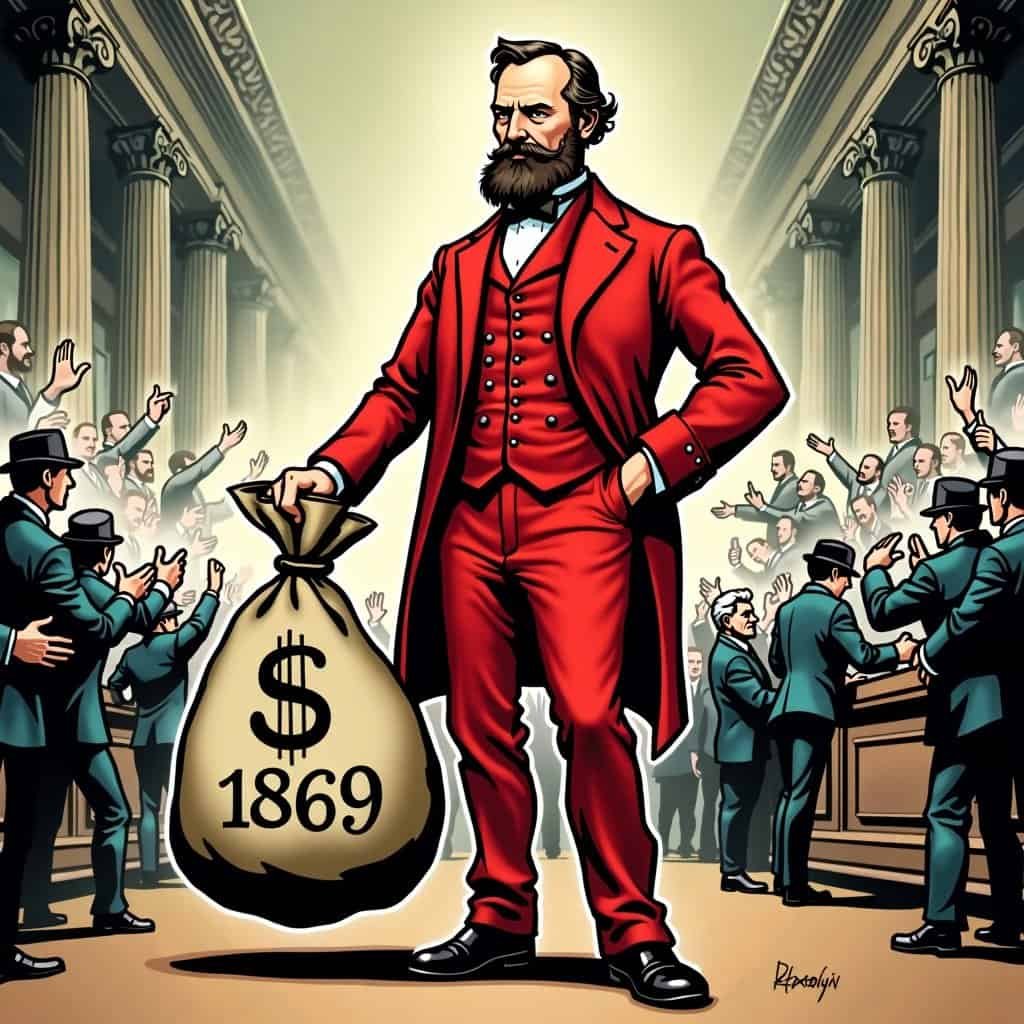President Ulysses S. Grant’s encounter with the Black Friday financial crisis of 1869 was more about tackling economic mayhem than hunting for bargains. While we associate Black Friday with crowded stores today, Grant faced a different kind of frenzy – one that threatened the nation’s financial stability.
Grant had to contend with Jay Gould and James Fisk, two crafty financiers who thought they could manipulate the gold market. These weren’t your average money-grubbers; they were betting with the country’s economy. Their scheming sent gold prices through the roof, creating a bubble that was bound to burst.
When Grant realized these bigwigs were fattening their wallets at the expense of hardworking Americans, he took decisive action. Instead of endless debates and red tape, Grant’s administration flooded the market with government gold. This move, which today’s fiscal conservatives might applaud as market intervention done right, effectively burst the bubble Gould and Fisk had inflated.
Gold Price Fluctuation During the 1869 Crisis
| Date | Gold Price (per ounce) |
|---|---|
| September 1, 1869 | $132 |
| September 24, 1869 (Peak) | $162 |
| September 24, 1869 (After intervention) | $133 |
The aftermath wasn’t pretty – plummeting gold prices rattled the markets. But Grant maintained his characteristic “trust but verify” approach, balancing quick action with lessons for future financial management. This wasn’t a government handout; it was a tough-love strategy that led to stronger market systems and improved policies. It’s the kind of “learn and grow” approach that ensures individual success without the government holding everyone’s hand.
Could the crash have been prevented? Probably. Gould and Fisk exploited weaknesses in a system that needed smarter oversight, not more red tape. It’s a lesson for those who favor limited government intervention.
Grant’s no-nonsense response not only defused the immediate threat but also showed what a limited, proactive government can achieve without stifling markets or creating dependency. It’s a story that could inspire conservative policy-making today. After all, unethical speculators rarely contribute to thriving free markets.
Grant’s Response to the Crisis
- ✓ Swift action to release government gold
- ✓ Avoided excessive government intervention
- ✓ Allowed markets to recover naturally
- ✓ Inspired future financial reforms
While modern crises are often met with endless Fed meetings and stimulus packages, Grant relied on gut instinct and practical wisdom. And unlike today’s tendency to legislate every problem away, Grant gave farmers and the free market room to bounce back and flourish.
The Black Friday crisis of 1869 isn’t just a dusty historical footnote; it’s a real-world example of solid Republican principles meeting adversity head-on. It proves that conservative policies can safeguard our economic independence, even in the face of that age-old enemy: greed.






